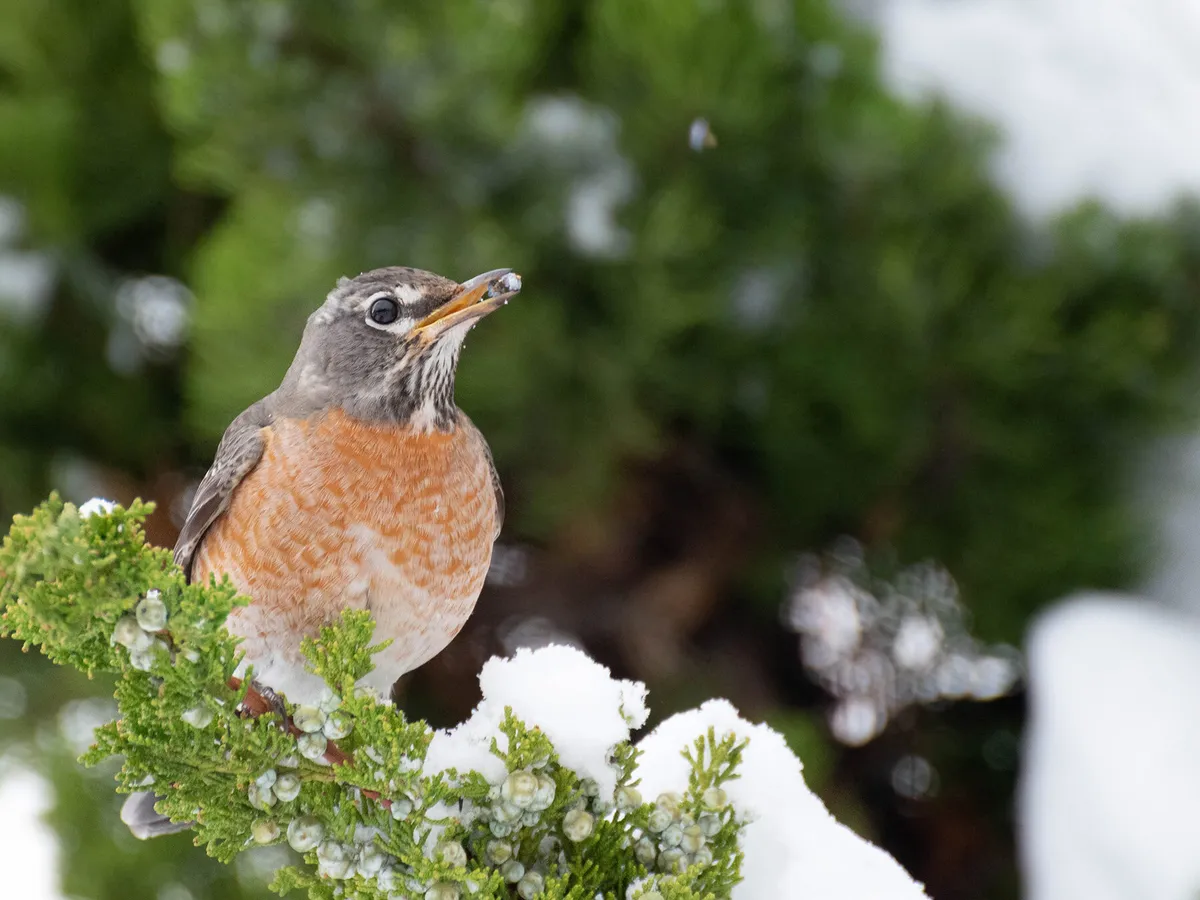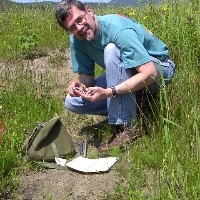Why is the American robin the state bird of Michigan?
When did the American Robin become Michigan’s state bird?
What does Michigan’s state bird look like?
How are these birds behaving?
Do American robins form communities?
What Do American Robins Eat?
Michigan is nicknamed “The Great Lakes State.” One reason is because Michigan has over 64,000 inline lakes and ponds! It is the 10th most populous state and the 11th most populous state in the United States. Michigan’s state animal is the white-tailed deer, but what is the state bird?
Michigan chose the American robin (Turdus migratorius), also known as the red-breasted robin, as its state bird in 1931. Known for its red breast, this migratory songbird actually has breast feathers that range in color from peach to red chestnut.

Michigan’s state bird, the American robin.
Why is the American robin the state bird of Michigan?
Michigan held a contest to choose its state bird, and the American robin won. According to various sources, House Unanimous Resolution 30 reads in part: “The robin is the most famous and popular of all Michigan birds.” This bird can be found in most backyards, woodlands and parks in Michigan .
When did the American Robin become Michigan’s state bird?
Its legislature adopted the bird on April 8, 1931. It shares the American robin as the state bird with Connecticut and Wisconsin.

American robin perched
What does Michigan’s state bird look like?
Both sexes of the American robin look similar, but the female has a reddish breast and belly. The birds have black to dark gray heads with broken eye rings. Typically, these birds have a black beak with a brown base. They have gray upper bodies and white tails. Their striped throat and a thin yellow beak give this bright, cheerful bird a festive look. Their winter plumage is much paler than their summer plumage. The bird’s youth has spots and a whiter breast.
The average American robin is 8.5 inches long from head to tail, but can grow up to 11 inches long. Its wingspan ranges from 12 to 16 inches. These little birds weigh very little — only 2.3 ounces to 3 ounces.

Female American Robin during winter
How are these birds behaving?
Cheerful and energetic, the American robin sings alone and often haunts the lawns of residential areas for food. You may wake up to the robin song as they sing in the early morning.
When they travel, American robins will be part of large flocks, as long as it is not during the breeding season. They frequent North and Central America. They love to travel and usually go to Florida for the winter. The Gulf Coast and central Mexico also prove to be winter habitats for this bird. Some fly to the Pacific coast.
Although they may live as far north as Canada or Alaska during the spring and summer, they prefer to mate and breed in warmer weather. They breed from April to July each year. They lose a bit of their cheerful nature when breeding, as they fiercely defend their territory.
The bird is monogamous, which means that two birds choose each other and pair up to breed each year. Their union lasts throughout the breeding season. In the following seasons, each will find a new partner to mate with. The mother usually lays three to five eggs per clutch. During the breeding season, robin couples may have two or three broods per year.
Hatching takes 14 days. When the eggs hatch, the babies have no feathers and no vision. Over the next two weeks, they grow their feathers and regain their sight while their parents tend to them. About two weeks after hatching, the chicks can leave the nest to venture into the outside world, but their parents continue to care for them for another two weeks. During this time, they can only fly short distances, so their parents will take care of them while they learn to spread their wings and fly. Once proficient in flying, they take off on their own.

American Robin on the tree
Do American robins form communities?
American robins form temporary communities. Every year they migrate south for the winter, and many robins gather together to form a flock. They fly long distances together to maximize safety. Traveling a lot reduces the risk of predator attack.
Once they reach their destination, they split into smaller groups. Each bird builds its own nest. This nest keeps them warm in winter. When they return to their permanent home in warmer weather, they also nest there. The nest is between 4.9 feet and 14.8 feet above the ground. They usually keep it in a fork between two branches or in a dense bush.
Their nest structures are a mix of many hardy materials. They wove the materials together to form a foundation, then smeared the interior floor with mud and covered it with soft grass, essentially providing themselves with a thick carpet. The foundation of the nest usually consists of twigs, feathers, rough grass and paper. In addition to the soft grass, you might see a robin with a piece of cloth in its beak or a small ball of bunting flying on its pillow. They scour their territories for soft items inside their nests. The mother prioritizes this because she will sit on the eggs for two weeks straight while they hatch.

American Robin looking for bugs in the grass
What Do American Robins Eat?
These birds eat an omnivorous diet. They love small invertebrates, and favorite foods include grasshoppers, beetle larvae, caterpillars, and earthworms. Robins also love seafood, especially molluscs. When they winter on the beach, you can see them feeding on small molluscs and insects. Although they don’t eat vegetables, they also eat fruit. American robins love berries as well as cultivated and wild fruits. It is a cheerful bird that sings often, especially in the early morning.
To learn more about what the American robin eats, check out this article.
Expert Q&A
ask a question
Do you have a question on this topic that we haven’t answered yet? Submit below and one of our experts will reply as soon as possible.

I am broadly interested in how human activities influence the ability of wildlife to persist in the modified environments that we create.
Specifically, my research investigates how the configuration and composition of landscapes influence the movement and population dynamics of forest birds. Both natural and human-derived fragmenting of habitat can influence where birds settle, how they access the resources they need to survive and reproduce, and these factors in turn affect population demographics. Most recently, I have been studying the ability of individuals to move through and utilize forested areas which have been modified through timber harvest as they seek out resources for the breeding and postfledging phases. As well I am working in collaboration with Parks Canada scientists to examine in the influence of high density moose populations on forest bird communities in Gros Morne National Park. Many of my projects are conducted in collaboration or consultation with representatives of industry and government agencies, seeking to improve the management and sustainability of natural resource extraction.











